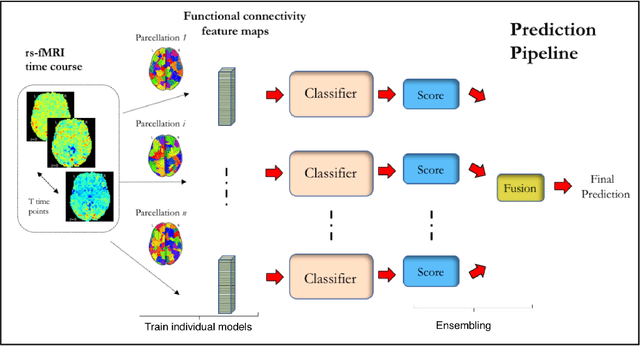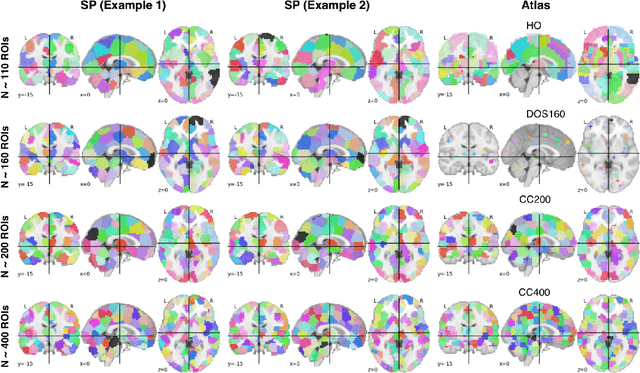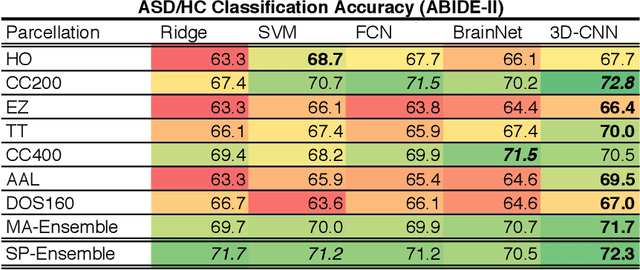Ensemble learning with 3D convolutional neural networks for connectome-based prediction
Paper and Code
Sep 11, 2018



The specificty and sensitivity of resting state functional MRI (rs-fMRI) measurements depend on pre-processing choices, such as the parcellation scheme used to define regions of interest (ROIs). In this study, we critically evaluate the effect of brain parcellations on machine learning models applied to rs-fMRI data. Our experiments reveal a remarkable trend: On average, models with stochastic parcellations consistently perform as well as models with widely used atlases at the same spatial scale. We thus propose an ensemble learning strategy to combine the predictions from models trained on connectivity data extracted using different (e.g., stochastic) parcellations. We further present an implementation of our ensemble learning strategy with a novel 3D Convolutional Neural Network (CNN) approach. The proposed CNN approach takes advantage of the full-resolution 3D spatial structure of rs-fMRI data and fits non-linear predictive models. Our ensemble CNN framework overcomes the limitations of traditional machine learning models for connectomes that often rely on region-based summary statistics and/or linear models. We showcase our approach on a classification (autism patients versus healthy controls) and a regression problem (prediction of subject's age), and report promising results.
 Add to Chrome
Add to Chrome Add to Firefox
Add to Firefox Add to Edge
Add to Edge